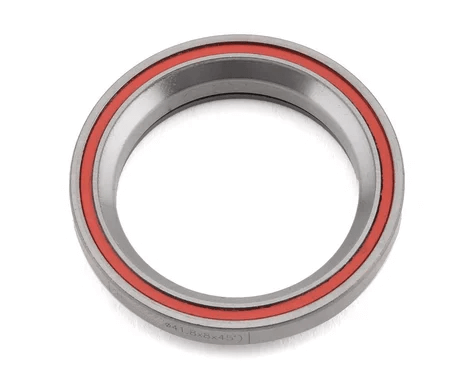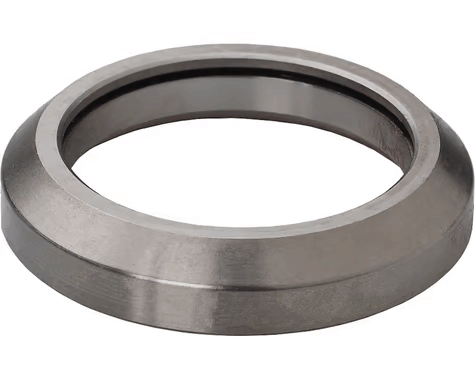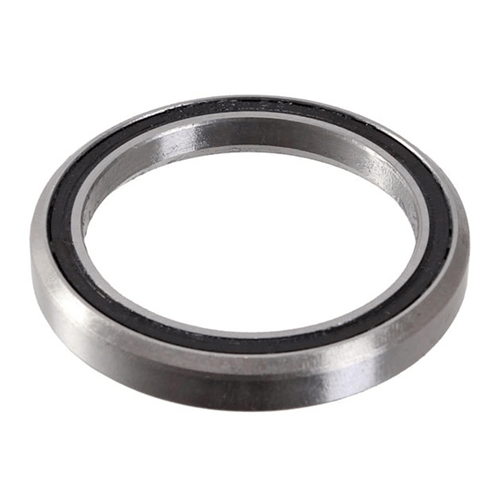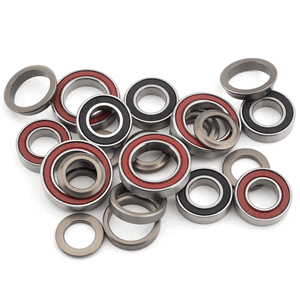Phenomenon Analysis of Bearing Fatigue Damage
Fatigue is the result of the periodic appearance of shear stress under the load surface. After a period of time, these shear stresses cause small cracks, and then gradually extend to the surface. When the rolling element passes through these cracks, some cracks fall off. , forming the so-called "peeling phenomenon", and then as the peeling situation continues to expand, the bicycle ball bearing is damaged and cannot be used.
The above is a description of bicycle ball bearing fatigue, which initially occurs below the surface. Although the initial peeling is usually very slight, as stress increases and cracks increase, resulting in the spread of the peeling area, this failure situation is usually Sustained for a long period of time, its clearly visible phase is when noise and vibration increase.

Before the bicycle ball bearing is completely destroyed, it provides enough time for the user to find it. Don't ignore the existence of this friction, it will reduce the speed of riding, and make the long-distance physical consumption more and slower.
If the roughness of the surface is small, if the lubricating oil film has an appropriate thickness, the probability of surface stress generation is quite low, which is why it is necessary to select a suitable oil for lubrication. However, if the pressure load exceeds If the pu value of the oil film (fatigue load limit value, such as too high rotation speed, too high pressure impact), the fatigue of the material will come sooner or later.
Reasons for the early damage of bicycle ball bearing - (Pollution)
Bicycles, especially off-road bicycles, often deal with mud and water. Although modern advanced bicycle axles use rubber-sealed bicycle ball bearings and high-pressure O-shaped rubber sealing rings on the outside, they can only reduce the intrusion of mud and water to a certain extent. It is almost impossible to completely avoid it, especially high-pressure water gun flushing, long-term off-roading in muddy water environment, continuous rainy riding, etc.

Bearings are precision parts. The smaller the bearing, the smaller the gap between the ball, the clang and the bowl, the smaller the gap between the bearings. If the grease of the bicycle ball bearing is polluted, it will not be able to reach the service life of the bicycle ball bearing, and it will happen earlier. At least 14 percent of the bearing damage is caused by contamination problems.
The solution is to replace the grease in time after use in harsh environments.
Reasons for premature bearing damage - (improper lubrication)
Although "maintenance-free" rubber-sealed bicycle ball bearings can be installed, 36 percent of prematurely failed bicycle ball bearings are due to incorrect application of grease technology.
Any improperly lubricated bicycle ball bearing will inevitably fail prematurely. Because the bicycle ball bearing is the part of the hub that is not easy to assemble and disassemble, and the incorrect grease is used congenitally, and the grease is not replaced in the later use, or If the grease is not replaced in time after carbonization, deterioration and contamination, it will be difficult for your hub to have a long enough life and good lubrication.

The bicycle ball bearings used in bicycles are mostly small-sized bearings with deep groove balls, such as 609, 6000, 6001, and 6200. These are bicycle balls used in the stator and rotor of small-scale motors in industry. Bearings, and such small bicycle ball bearings are usually pre-installed with low-viscosity, high-lubricity broad-spectrum grease at the time of purchase.
In the past, we have also bought and used a lot of these kinds of greases that are quite expensive, such as the LGMT-2 synthetic lithium base grease we bought in the past, which is a low-torque, low-friction small motor oil. The viscosity of the oil is only 110, which is poor for high load, extreme pressure, reciprocating motion, and according to the use of the bicycle axle, this should be a low speed, high extreme pressure (because a lot of pressure is concentrated in only a few Small bicycle ball bearing, and the impact jump will produce more pressure), so we later chose LGEP-2 synthetic lithium base grease, its viscosity reaches 200, high load, high waterproof, high rust, high shock resistance, although It is not as good as the LGMT-2 in the low torque friction index, but it is perfectly suitable for the front and rear bottom brackets and the headset of the bicycle.

Reasons for early damage of bicycle ball bearing - (improper assembly)
Another reason for the damage as high as 16% is that the improper assembly, and the wrong or violent installation method, make those bicycle ball bearings have been hit hard on the surface of the smooth bowl when they are installed.
In order to let the bicycle ball bearing clamp the shaft center and prevent the occurrence of the friction phenomenon of the shaft sleeve (this phenomenon will instantly generate high temperature on the high-speed rotating machinery, causing the lubricating oil to dry out and even cause the thermal expansion to be stuck, resulting in shutdown), so the bearing The inner clang and the outer bowl (also known as the bearing box in industry) use a phenomenon of "interference". In layman's terms, the shaft is larger than the inner clang, or the outer bowl is larger than the loaded material. This interference requires a lot of force to Loading, and such loading requires great force to strike the bicycle ball bearing, which will cause damage to the bicycle ball bearing during the knocking process, so industrial large bearings usually use heating, hydraulic jacking, etc. .
Bicycles use rubber-sealed deep groove ball bearings, which are most afraid of knocking (needle bearing and large bearing are slightly more resistant to knocking), and the heating loading method cannot be used, but due to the bicycle The interference of the bearing is very small, and it can even be put into the bearing by hand, so it is relatively safe to use a rubber hammer to knock in, but the backing material needs to have a very flat surface, and the use of static pressing is relatively safe,such as pressing with a vise is the best way.
